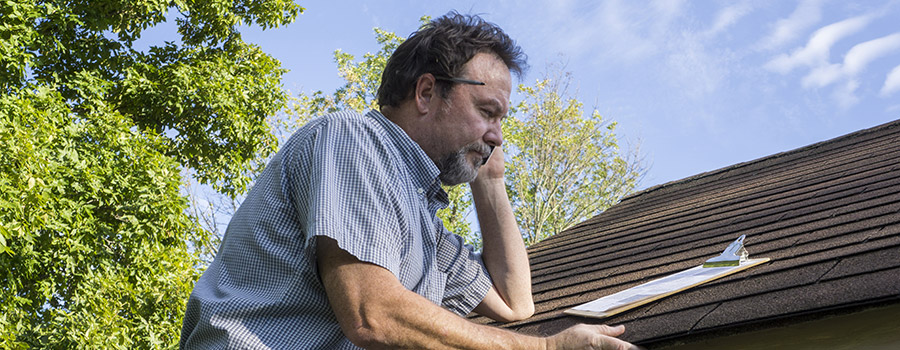
Signs Of Damaged Roof Sheathing
Roof sheathing is an important part of a roofing system. If damaged, it can lead to a compromised roof structure, severe damage, leaks, mold or mildew formation. If you suspect that your roof’s sheathing has been damaged, a Toms River roofing professional should be contacted to assess the problem.
Sheathing is placed underneath a roof’s shingles or tiles as a protective layer and prevents moisture from permeating through the roof. However, since most sheathing is made from wood or particle board, it is susceptible to rotting and damage when continuously exposed to excess moisture. Functioning sheathing will be able to properly dry out after being exposed to wetness, and it won’t easily rot. However, if sheathing endures turbulent weather or sustains damage due to long-term exposure to water, it will break down much faster.
One of the most common signs that a roof’s sheathing is damaged is a roof leak. Such leakage can lead to the development of mold and mildew within a home. In addition, a leaking roof is more prone to collapse as well as the formation of large gaps and holes. A sagging ceiling is another clue that there are major problems with a roof’s sheathing. Waterlogged roofing materials and sheathing will bend and bow, creating dips or making a ceiling take on a convex appearance.
It’s best to have your roof looked over by a knowledgeable expert if you notice issues with its sheathing. After inspecting potential roof problems, it will likely be recommended that the sheathing be replaced or patched. Patching is a more likely solution if issues are caught early on, and this will cost less than a complete replacement. Extensive damage to a roof’s sheathing, especially if it is rotted in numerous areas along the roofing system, will necessitate a complete repair. It is important that the roofer who completes the repairs is qualified and well experienced as a properly laid sheathing layer is much less likely to incur future damage as opposed to sheathing that is incorrectly installed.
In addition to replacing the sheathing itself, a roofer may recommend installing new gutters and downspouts or thoroughly cleaning these parts. Gutters are key to preventing the collection of water on a roof, but if a gutter is heavily clogged, broken, bent or crushed, it won’t be an effective means of protecting your roof’s components. Having your roof’s sheathing inspected and properly maintained will go a long way towards keeping your entire roof in working order.
The experts at Fortified Roofing, Toms River roofers can answer your questions about skylights or new roofs.
Common roofing term explained by Fortified Roofing, Toms River roofers:
Downspouts
A downspout, also known as a drain spout or downpipe, is the pipe that carries water from a roof’s gutter to a drain or the ground. Because it’s installed vertically, a cracked or broken downspout will lead to inefficient and incomplete water drainage, which can cause water to collect on a roof and eventually leak or cause other damage.
Question answered by Toms River roofers from Fortified Roofing:
What are signs that my sheathing is rotting?
Wood sheathing will eventually rot as excess moisture continually collects on it and the material is unable to properly dry out. Some signs that roof sheathing is damaged or rotted include a sagging ceiling, noticeable roof leaks and missing patches of roof shingles or tiles. If your gutters are broken, that’s also a sign that your sheathing is damaged as functioning gutters help prevent moisture accumulation.

Rated 4.7 out of 5 stars based on 8 customer reviews.

Oh My! People say such nice things!
